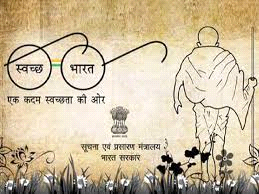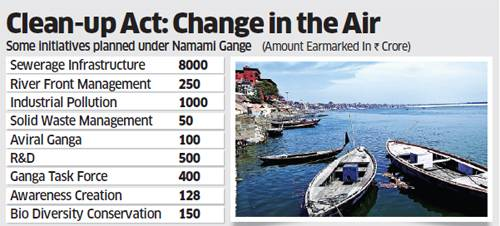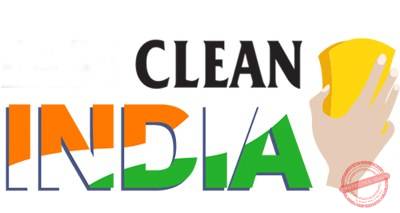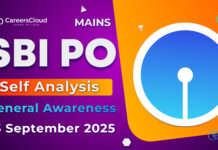Dear Readers & Aspirants, We collected Modi Schemes in Environmental and Health and make it in PDF format. We Hope it will definitely help you for your SBI PO,IBPS,RBI assistant and many more upcoming Exams. All the Best My Dear Aspirants & Readers.
- Modi Schemes: Banking & Insurance Part 1 PDF
- Modi Schemes: Agriculture & Irrigation – Part 2 PDF
- Modi Schemes: Technology Part 3 PDF
- Modi Schemes: child and Women Empowerment Part 5 PDF
1 Swachh bharat abhiyan
Introduction
Swachh Bharat Abhiyan is started by the government to make India a completely clean India. Clean India was a dream seen by the Mahatma Gandhi regarding which he said that, “Sanitation is more important than Independence”. During his time he was well aware of the poor and dirty condition of the country that’s why he made various efforts to complete his dream however could not be successful. As he dreamt of clean India a day, he said that both cleanliness and sanitation are integral parts of healthy and peaceful living. Unfortunately, India became lack of cleanliness and sanitation even after 67 years of independence. According to the statistics, it has seen that only few percentage of total population have access to the toilets. It is a programme run by the government to seriously work to fulfill the vision of Father of Nation (Bapu) by calling the people from all walks of life to make it successful globally.

This mission has to be completed by 150th birth anniversary of Bapu (2nd October of 2019) in next five years (from the launch date). It is urged by the government to people to spend their only 100 hours of the year towards cleanliness in their surrounding areas or other places of India to really make it a successful campaign. There are various implementation policies and mechanisms for the programme including three important phases such as planning phase, implementation phase and sustainability phase.
What is Swachh Bharat Abhiyan
Swachh Bharat Abhiyan is a national cleanliness campaign established by the Government of India. This campaign is covering 4041 statutory towns in order to clean roads, streets, and infrastructure of the India. It is a mass movement has run to create a Clean India by 2019. It is a step ahead to the Mahatma Gandhi’s dream of swachh Bharat for healthy and prosperous life. This mission was launched on 2nd of October 2014 (145th birth anniversary of Bapu) by targeting its completeness in 2019 on 150th birth anniversary of Bapu. The mission has been implemented to cover all the rural and urban areas of the India under the Ministry of Urban Development and the Ministry of Drinking Water and Sanitation accordingly.
The first cleanliness drive (on 25th of September 2014) of this mission was started by the Indian Prime Minister, Narendra Modi earlier to its launch. This mission has targeted to solve the sanitation problems as well as better waste management all over the India by creating sanitation facilities to all.
Need of Swachh Bharat Abhiyan
- It is really very essential to eliminate the open defecation in India as well as making available toilets facility to everyone.
- It is needed in India to convert the insanitary toilets into flushing toilets.
- It is necessary in order to eradicate the manual scavenging system.
- It is to implement the proper waste management through the scientific processes, hygienic disposal, reuse, and recycling of the municipal solid wastes.
- It is to bring behavioral changes among Indian people regarding maintenance of personal hygiene and practice of healthy sanitation methods.
- It is to create global awareness among common public living in rural areas and link it to the public health.
- It is to support working bodies to design, execute and operate the waste disposal systems locally.
- It is to bring private-sector participation to develop sanitary facilities all through the India.
- It is to make India a clean and green India.
- It is necessary to improve the quality of life of people in rural areas.
- It is to bring sustainable sanitation practices by motivating communities and Panchayati Raj Institutions through the awareness programmes like health education.
- It is to bring the dream of Bapu to really come true.
Swachh Bharat Mission in Urban Areas
The swachh bharat mission of urban areas aims to cover almost 1.04 crore households in order to provide them 2.6 lakhs of public toilets, 2.5 lakhs of community toilets together with the solid wastes management in every town. Community toilets have been planned to be built in the residential areas where availability of individual household toilets is difficult and public toilets at designated locations including bus stations, tourist places, railway stations, markets, etc. Cleanliness programme in the urban areas (around 4,401 towns) have been planned to be completed over five years till 2019. The costs of programmes are set like Rs 7,366 crore on solid waste management, Rs 1,828 crore on public awareness, Rs 655 crore on community toilets, Rs 4,165 crore on individual household toilets, etc. Programmes which have been targeted to be completed are complete removal of open defecation, converting unsanitary toilets into flush toilets, eradicating manual scavenging, bring behavioral changes among public, and solid waste management.

Gramin Swachh Bharat Mission
Gramin swachh bharat mission is a mission implementing cleanliness programmes in the rural areas. Earlier the Nirmal Bharat Abhiyan (also called Total Sanitation campaign, TSC) was established by the Government of India in 1999 to make rural areas clean however now it has been restructured into the Swachh Bharat Mission (Gramin). This campaign is aimed to make rural areas free of open defecation till 2019 for which the cost has been estimated is one lakh thirty four thousand crore rupees for constructing approximately 11 crore 11 lakh toilets in the country. There is a big plan of converting waste into bio-fertilizer and useful energy forms. This mission involves the participation of gram panchayat, panchayat samiti and Zila Parishad.
Following are the objectives of Swachh Bharat Mission (Gramin)_
- To improve quality of life of people living in the rural areas.
- Motivate people to maintain sanitation in rural areas to complete the vision of Swachh Bharat by 2019.
- To motivate local working bodies (such as communities, Panchayati Raj Institutions, etc) to make available the required sustainable sanitation facilities.
- Develop advance environmental sanitation systems manageable by the community especially to focus on solid and liquid waste management in the rural areas.
- To promote ecologically safe and sustainable sanitation in the rural areas.
Swachh Bharat-Swachh Vidyalaya Campaign
The swachh bharat swachh vidyalaya campaign runs by the Union Ministry of Human Resource Development having same objectives of cleanliness in the schools. A big programme was organized under it from 25th of September 2014 to 31st of October 2014 in the Kendriya Vidyalays and Navodaya Vidyalya Sangathans where lots of cleanliness activities were held such as discussion over various cleanliness aspects in the school assembly by the students, teachings of Mahatma Gandhi related to cleanliness, cleanliness and hygiene topics, cleaning activities (in the class rooms, libraries, laboratories, kitchen sheds stores, playgrounds, gardens, toilets, pantry areas, etc), cleaning of statue in the school area, speech over the contribution of great people, essay writing competition, debates, art, painting, film, shows, role plays related to hygiene including other many activities on cleanliness and hygiene. It has also been planned to held half an hour cleaning campaign in the schools twice a week involving the cleanliness activities by the teachers, students, parents and community members.
Conclusion
We can say swachh bharat abhiyan, a nice welcome step to the clean and green India till 2019. As we all heard about the most famous proverb that “Cleanliness is Next to Godliness”, we can say surely that clean India campaign (swachh bharat abhiyan) will really bring godliness all over the country in few years if it is followed by the people of India in effective manner. So, the cleanliness activities to warm welcome the godliness have been started but do not need to be ended if we really want godliness in our lives forever. A healthy country and a healthy society need its citizens to be healthy and clean in every walk of life.
2 Bal Swachhta Abhiyan
Bal Swachhta Abhiyan or Mission was especially launched on the birth anniversary of the first Indian Prime Minister, Pandit Jawaharlal Nehru (also called as Chacha Nehru) because of his love and devotion towards children. Chacha Nehru was a great person who loved children so much that’s why children’s day event and Bal Swachhta Abhiyan has been launched on the 14th of November, his birth anniversary. The celebration of this mission takes place from 14th of November to 19th of November means from birthday of first Indian prime minister to birthday of first woman Indian prime minister (Indira Gandhi).
This mission was launched by the Indian Union Minister of Women and Child Development, Smt. Maneka Sanjay Gandhi in New Delhi at Maidangarhi anganwadi on 14th of November, 2014. This abhiyan is started as an initiative programme of nationwide sanitation. The objectives of this mission are more likely matches with the purposes of Swachh Bharat Mission launched by Indian Prime Minister, Narendra Modi. Both of the missions have purpose of achieving a Swachh Bharat or clean India in near future. Children are the best medium of initiating cleanliness and sanitation all through the India as well as motivate others in maintaining the cleanliness of homes, surroundings, environment, schools, etc.

Children from all schools actively take part in the ongoing cleanliness drive to make India a clean India as well as make cleanliness a vital part of daily life. Cleanliness is a campaign, the purpose of which can be fulfilled only when every Indian citizen takes part and do their best to maintain the cleanliness in daily routine. This five days long mission has following themes according to the date of celebration in 2014:
The theme of 14th November was “Clean Schools, Surroundings and Play areas”.
The theme of 15th November was “Clean Food”.
The theme of 17th November was “Clean Self”.
The theme of 18th November was “Clean Drinking Water”.
The theme of 19th November was “Clean Toilet”.
Different themes of particular dates were decided by the government to make the celebration more enthusiastic, effective, targetable and purposeful. All the students took part actively in the cleanliness drive and followed strict instructions to undertake activities of garbage removal from the surrounding areas. Students are motivated, directed and inspected by their teachers and principals to perform the many activities related to event.
3 Namami Ganga Yojana- Integrated Ganga Conservation Mission
National Ganga River Basin Authority (NGRBA) has started the Mission Clean Ganga with a changed and comprehensive approach to champion the challenges posed to Ganga through four different sectors, namely, of wastewater management, solid waste management, industrial pollution and river front development.
NGRBA has been established through the Gazette notification of the Government of India (Extraordinary) No. 328 dated February 20, 2009 issued at New Delhi with the objectives of
(a) ensuring effective abatement of pollution and conservation of the river Ganga by adopting a river basin approach to promote inter-sectoral co-ordination for comprehensive planning and management.
(b) maintaining environmental flows in the river Ganga with the aim of ensuring water quality and environmentally sustainable development.
NGRBA is mandated to take up regulatory and developmental functions with sustainability needs for effective abatement of pollution and conservation of the river Ganga by adopting a river basin approach for comprehensive planning and management. The Ministry of Water Resources, River Development and Ganga Rejuvenation(MoWR, RD & GR) is the nodal Ministry for the NGRBA. The authority is chaired by the Prime Minister and has as its members the Union Ministers concerned, the Chief Ministers of the States through which Ganga flows, viz., Uttarakhand, Uttar Pradesh, Bihar, Jharkhand and West Bengal, among others. This initiative is expected to rejuvenate the collective efforts of the Centre and the States for cleaning the river.
NGRBA functions include development of a Ganga River Basin Management Plan, regulation of activities aimed at prevention, control and abatement of pollution, to maintain water quality and to take measures relevant to the river ecology in the Ganga basin states. It is mandated to ensure the maintenance of minimum ecological flows in the river Ganga and abate pollution through planning, financing and execution of programmes including that of –
- Augmentation of Sewerage Infrastructure
- Catchment Area Treatment
- Protection of Flood Plains
- Creating Public Awareness
NGRBA has been mandated as a planning, financing, monitoring and coordinating authority for strengthening the collective efforts of the Central and State governments for effective abatement of pollution and conservation of river Ganga so as to ensure that by the year 2020 no untreated municipal sewage or industrial effluent will flow into the river Ganga.
The NGRBA is fully operational and is also supported by the state level State Ganga River Conservation Authorities (SGRCAs) in five Ganga basin States which are chaired by the Chief Ministers of the respective States. Under NGRBA programme, projects worth Rs. 4607.82 crore have been sanctioned up to 31st March 2014.
Powers & Functions
NGRBA has the power, combined with regulatory and developmental functions, to take all such measures and discharge functions as it deems necessary or expedient for effective abatement of pollution and conservation of the river Ganga in keeping with sustainable development needs. Such measures include following matters, namely:-
a)Development of river basin management plan and regulation of activities aimed at prevention, control and abatement of pollution in the river Ganga to maintain its water quality, and to take such other measures relevant to river ecology and management in the Ganga Basin States.
b)Maintenance of minimum ecological flows in the river Ganga with the aim of ensuring water quality and environmentally sustainable development.
c) Measures necessary for planning, financing and execution of programmes for abatement of pollution in the river Ganga including augmentation of sewerage infrastructure, catchment area treatment, protection of flood plains, creating public awareness and such other measures for promoting environmentally sustainable river conservation.
d)Collection, analysis and dissemination of information relating to environmental pollution in the river Ganga.
e)Investigations and research regarding problems of environmental pollution and conservation of the river Ganga.
f)Creation of special purpose vehicles, as appropriate, for implementation of works vested with the Authority.
g)Promotion of water conservation practices including recycling and reuse, rain water harvesting, and decentralised sewage treatment systems.
h)Monitoring and review of the implementation of various programmes or activities taken up for prevention, control and abatement of pollution in the river Ganga, and
i) Issuance of directions under section 5 of the Environment (Protection) Act 1986 (29 of 1986) for the purpose of exercising and performing all or any of the above functions and to take such other measures as the Authority deems necessary or expedient for achievement of its objectives.
f) The Environment (Protection) Act, 1986 for the purpose of exercising and performing these functions and for achievement of its objectives.
National Mission for Clean Ganga (NMCG)
It is the implementation wing of National Ganga River Basin Authority (NGRBA). It is a registered society originally formed by Ministry of Environment, Forests and Climate Change(MoEFCC) on 12th August 2011 under the Societies Registration Act, 1860. As per the 306th amendment in the Government of India (Allocation of Business) Rules, 1961, both NGRBA and NMCG are allocated to the Ministry of Water Resources, River Development and Ganga Rejuvenation(MoWR,RD &GR). Accordingly the General Body of NMCG is being re constituted. The Secretary to the Government of India, MoWR, RD & GR is the current chairman of the Governing Council of NMCG. As per the approval of the Cabinet Committee on Economic Affairs (CCEA), the mandate of NGRBA is being implemented by, the National Mission for Clean Ganga (NMCG). At national level NMCG is the coordinating body and is being supported by States Level Program Management Groups (SPMGs) of UP, Uttarakhand, Bihar and West Bengal which, are also registered as societies under Societies Registration Act, 1860 and a dedicated Nodal Cell in Jharkhand.
The area of operation of NMCG shall be the Ganga River Basin, including the states through which Ganga flows, as well as the National Capital Territory of Delhi. The area of operation may be extended, varied or altered in future, by the Governing Council to such other states through which major tributaries of the river Ganga flow, and as the National Ganga River Basin Authority (NGRBA) may decide for the purpose of effective abatement of pollution and conservation of the river Ganga.
The Mission Director of NMCG is a Joint Secretary (JS) in Government of India. For effective implementation of the projects under the overall supervision of NMCG, the State Level Program Management Groups (SPMGs) are, also headed by senior officers of the concerned States.

This ISRO-backed India specific GIS tool will ensure real-time and public monitoring of river surface pollution on ground situations. The government will invite global tenders this week for river surface cleaning at ten chosen cities — Haridwar, Varanasi, Allahabad, Kanpur, Mathura & Vrindavan, Garhmukteshwar, Patna, Kolkata, Sahibgunj and Nabadwip.
FACT FILE – CLEAN-GANGA * STATISTICS
*PROJECT MODEL -“THAMES RIVER “
- Ganga action plan (GAP)sarted in -1986
- Stated by rajiv gandhi PM in 1985 with $ 226 million aid
2.FUND ALLOCATION
- From 1985 -2014 — 4500 crores by govt of india
- Ganga conservation mission –2000 cr
- Budget -2014-15 — 2037 cr
- Recent — 20000 crores for “NAMAMI GANGA PROJECT “
3.GANGA covers
- 5- states uttarkhand , jharkahand , uttarpradesh, westbengal , bihar
- 10 -piligrim places , HARIDWAR , VARANASI, ALLAHBAD, KANPUR , VRIRDAM, GORIMUKESHU, PATNA, KOLKATTA, SAHIBANGJ, NABODWIP
- 18 – years project duration
- 23- Small cities
- 26% — Ganga covers india land mass
- 29 – Big cities
- 37% – gnaga covers india
- 48-towns
- 118- GHATS
- 2500 km- project coverage
4.MINISTRY
- Ministry involved –Union ministery of water resources river development
- Authority –NGRBA — National Ganga River Basin Authourity
- Mission — NMCG — National Mission for Clean Ganga
5.ASSISTANCE FROM OTHER COUNTRIES_
- JAPAN – External aided project
- Australia — cleaning project
- germany — water management & rejvuation
- Netherlands — flood control assistance
6.POLLUTED LEVELS
- BOD- biochemical oxygen demand –100mg per litre
- 250 industries along the ganga zone
- total pollution per day — 50,500 million litres per day
Dialogue has been organized by National Mission for Clean Ganga
which is being attended by large number of delegates from different parts of the country and abroad.
The dialogue will have four different sessions on
- “Ganga & Sanskriti” (for Spiritual Leaders)
- “Public Participation for Ganga” (for Public Representatives & Administrators)
- “Aviral & Nirmal Ganga” (for NGOs & Environmentalists)
- “Comprehensive & Sustainable Solutions” (for Academicians & Technocrats)





